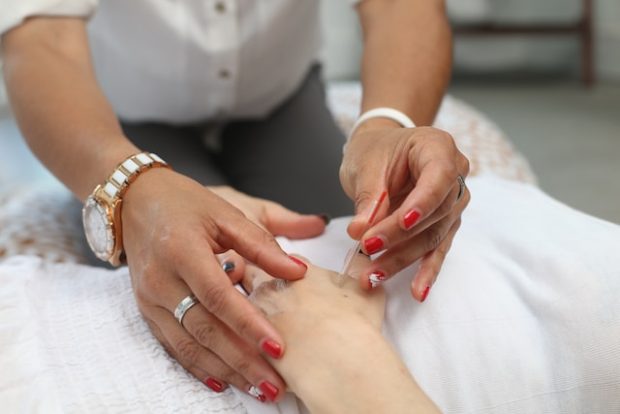Inserting needles into your skin may not be your ideal kind of treatment, but regular sessions of acupuncture and dry needling are some of the best alternative methods of alleviating pain.
But considering acupuncture and dry needling both use thin needles that are inserted in various points of your body, it can be difficult to differentiate between the two.
Whether you’re looking to treat your symptoms or just looking for a way to unwind, below is a quick breakdown of the two to help you figure out which is best for you.
What is acupuncture?
Acupuncture is a form of Ancient Chinese medicine that focuses on balancing the flow of your energy flow, called Qi. They believe that Qi travels through the pathways throughout your body called meridians. Once the flow of your Qi is blocked, that’s when pain and sickness start to appear in your body.
Acupuncture aims to remove these blocks and restore the healthy flow of your chi. To get the best results, acupuncture should only be performed by trained and licensed practitioners.
It involves inserting thin needles at distinct points of your body to stimulate your nerves to release your body’s natural painkillers, called endorphins. Depending on your symptoms, acupuncture can be applied to areas like the neck, back, shoulder, hands, and knees.
What are the benefits of getting acupuncture?
Aside from relieving pain, regular sessions of acupuncture can be beneficial for treating various symptoms and illnesses including:
-
- Nausea
- Arthritis
- Allergies
- Vomiting
- Migraines
- Knee pain
- Headaches
- Menstrual cramps
It’s also been shown to lessen the severity of depression and lower stress and anxiety in some patients. If you’re having trouble with insomnia, acupuncture can also help improve your sleep by relaxing your muscles.
What is dry needling?
Similar to acupuncture, dry needling is a type of modern treatment that inserts small needles throughout your body. But instead of focusing on the meridians, the needles are placed on the tight knots of your muscles, called trigger points.
Stimulating your trigger points will cause a twitch response that loosens up your muscles. This results in improving your circulation and alleviating the pain.
During treatment, no liquid is injected into your body, that’s why the treatment is aptly named. Healthcare professionals, like physical therapists, are also only allowed to perform this method as long as they’ve received some training in dry needling.
What is dry needling good for?
Dry needling is best for treating muscle pain and soreness, but consistent treatments can also provide several benefits. Since stimulating the trigger points can help loosen up your muscles, dry needling can also improve your flexibility and range of motion. Because of this, dry needling is also shown to reduce the pain caused by fibromyalgia.
With proper treatment, dry needling can also speed up your recovery by increasing your blood circulation and releasing endorphins through your trigger points. It also helps with repetitive stress disorder, which is caused by damage in your nervous or musculoskeletal system due to repetitive activities and stress.
Acupuncture vs dry needling
Acupuncture and dry needling may overlap in providing benefits to your body, but dry needling mostly focuses on relieving pain, while acupuncture aims to achieve overall health.
Acupuncture can also use 5-20 needles during treatment and are left for 10-20 minutes while you relax. While dry needling uses a method called the ‘in-and-out technique’, where the needle is inserted into a trigger point and then removed immediately.
For treating your central nervous system, a dry needling session can also sometimes use the ‘non-trigger point technique’ where the needles are positioned around your trigger point instead of directly on it.
Which is more effective: acupuncture or dry needling?
Since acupuncture and dry needling have different goals and techniques, the best treatment for you will depend on your symptoms and matter of preference.
If you want to alleviate muscle pain and tension, a few dry needling sessions can be beneficial. But if you’re searching for an alternative treatment method for a certain medical condition, acupuncture is the way to go.
But not everyone will have the same results for both treatments. So if you don’t see any results after a few sessions of a certain treatment, maybe the other will work for you. Just make sure to consult your doctor before booking your treatments.
Ready to try acupuncture?
If you want to know how acupuncture can help your body, Lycoming Orthopedic & Sports Acupuncture has board-certified experts specializing in pain management and holistic wellness. Whether you want to alleviate your symptoms or simply looking to unwind and relax, their clinic is equipped to give you the best personal experience.
They also offer dry needling, electrostimulation, and dry cupping to ensure you get comprehensive treatments for your ailments. For questions or inquiries, contact their team now and book your first consultation.
Read More:


